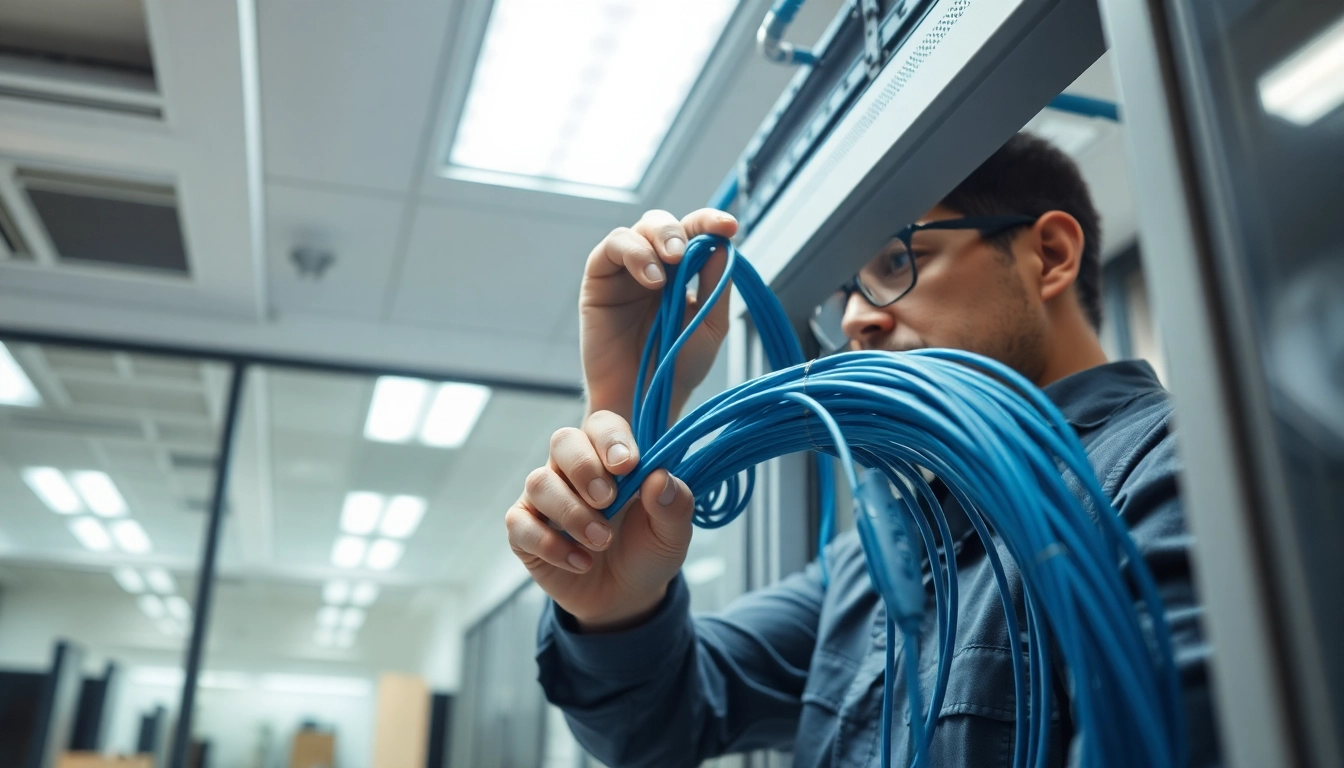Understanding Data Cable Installation Services
In today’s increasingly digital world, robust networking is essential for both businesses and personal use. As organizations implement advanced technologies and rely more heavily on data-driven operations, the significance of effective data cable installation services comes into the spotlight. A professional Data Cable Installation service can establish the backbone of communication that enhances performance, reliability, and security for your setup.
What is Data Cable Installation?
Data cable installation refers to the process of installing cables used for data transmission in various settings — be it a home office, industrial space, or commercial building. It encompasses the physical laying of cables as well as configuring them to ensure that devices can communicate effectively over networks. While the physical installation can seem relatively straightforward, professional installation is crucial for ensuring that the wiring adheres to industry standards and best practices, which can significantly influence network performance and reliability.
Essential Types of Data Cables
Various types of data cables are used in cabling installations, depending on the specific needs of the network. Some of the most common types include:
- Category 5e (Cat 5e): Supports data speeds up to 1 Gbps, suitable for standard networking needs.
- Category 6 (Cat 6): Designed for higher speeds and better performance, it can handle up to 10 Gbps over short distances.
- Category 6a (Cat 6a): Similar in function to Cat 6 but supports longer distances and is better suited for high-bandwidth applications.
- Fiber Optic Cables: Used for long-distance and high-performance data networking. They transmit data as light, offering higher speeds and bandwidth capabilities than copper cables.
- Coaxial Cables: Primarily used for cable television and broadband internet connections, they consist of an inner conductor surrounded by a tubular insulating layer.
Common Applications for Data Cable Installation
Data cable installations serve various purposes across different environments:
- Office Networking: Ensures effective communication between computers, servers, printers, and other network devices within an office.
- Home Networking: Supports connectivity for smart home devices, PCs, gaming consoles, and other home technologies.
- Data Centers: Provides the infrastructure necessary for high-speed data transmission and storage solutions.
- Public Networks: Powers wireless access points in public spaces, ensuring consistent internet access for users.
Benefits of Professional Data Cable Installation Services
Engaging a professional for data cable installation brings a host of benefits that can significantly enhance your networking experience:
Enhanced Network Performance
Professional installers utilize industry standards to ensure optimized wiring setups. This leads to:
- Reduced signal interference and loss, resulting in faster data transfer rates.
- Improved overall network efficiency and lower latency.
Taking the time to correctly install data cables minimizes the chances of future costly repairs caused by poor installations.
Long-term Cost Savings
While hiring professionals may entail initial investment, it often results in long-term savings. Proper installation reduces downtime and the likelihood of needing frequent repairs. Over time, the cumulative savings can be substantial.
Improved Safety and Compliance
Compliance with local building codes and regulations is essential. Professionals are acquainted with the legal requirements and safety protocols, ensuring that installations should not endanger infrastructure or violate rules, subsequently reducing the risk of accidents and liabilities.
How to Choose the Right Data Cable Installation Provider
Choosing the right installation provider can seem daunting, but paying attention to certain qualities helps make an informed choice. Here are the steps to guide this process:
Key Qualities to Look For
When selecting a data cable installation service, consider the following factors:
- Experience and Expertise: Look for a provider with a solid track record and positive reviews from previous clients.
- Certification: Ensure the team comprises certified technicians who are familiar with current industry standards.
- Comprehensive Services: Opt for a company that offers a range of services, from design to installation and maintenance.
- Customer Support: Reliable customer service and post-installation support can significantly enhance your experience and the longevity of your setup.
Questions to Ask Before Hiring
Before committing to an installation provider, ask these important questions:
- What types of cables do you recommend for my specific needs?
- Can you provide references from previous installations?
- What warranties or guarantees do you offer?
- How do you handle issues should they arise after installation?
Understanding Service Pricing
Installation costs can vary significantly based on project scope, type of cables, and labor costs. It’s crucial to ask for detailed quotes and breakdowns of pricing to ensure transparent practices:
- Small residential projects can range from $300 to $800.
- Larger commercial installations might run from $1,200 to $6,000 or more.
Steps in the Data Cable Installation Process
An effective installation runs through several key phases:
Pre-Installation Site Assessment
This initial phase includes a comprehensive evaluation of the site where cables will be installed. A professional will:
- Assess existing wiring and equipment.
- Identify specific networking needs based on user activity and goals.
- Map out the optimal cable layout for efficiency.
Installation Techniques and Best Practices
Once assessment is complete, the actual installation takes place. Professionals typically follow these best practices:
- Careful handling of cables to avoid damage.
- Using appropriate tools for cutting, stripping, and terminating cable.
- Maintaining clear labeling and organization for easy troubleshooting.
- Adhering to maximum length restrictions to prevent signal degradation.
Post-Installation Testing and Support
After installation, thorough testing ensures everything is functioning correctly. Professionals will:
- Perform tests to verify performance and detect potential issues.
- Provide clients with documentation and guides for system use.
- Offer ongoing support and optional maintenance plans for future needs.
Maintaining Your Data Cabling Infrastructure
To ensure continued optimal performance, regular maintenance and proactive care of the cabling systems are essential:
Regular Inspections and Upgrades
Periodically assess the data cabling infrastructure to identify signs of wear or damage. Upgrading networking components, where necessary, keeps the system up to date and capable of handling greater bandwidth demands.
Troubleshooting Common Issues
Common problems such as slow connections or dropped signals can often be traced back to cabling issues. Here are some solutions:
- Check for loose connectors or improperly terminated ends.
- Look for physical damage to cables.
- Ensure no excessive bends or pulls that can affect signal quality.
Choosing the Right Equipment for Longevity
Selecting high-quality data cables and connectors contributes to system longevity and performance. Opt for equipment that meets industry standards and is suitable for the environment in which it will be installed, whether it be moisture-rich, dusty, or subject to high environmental changes.



